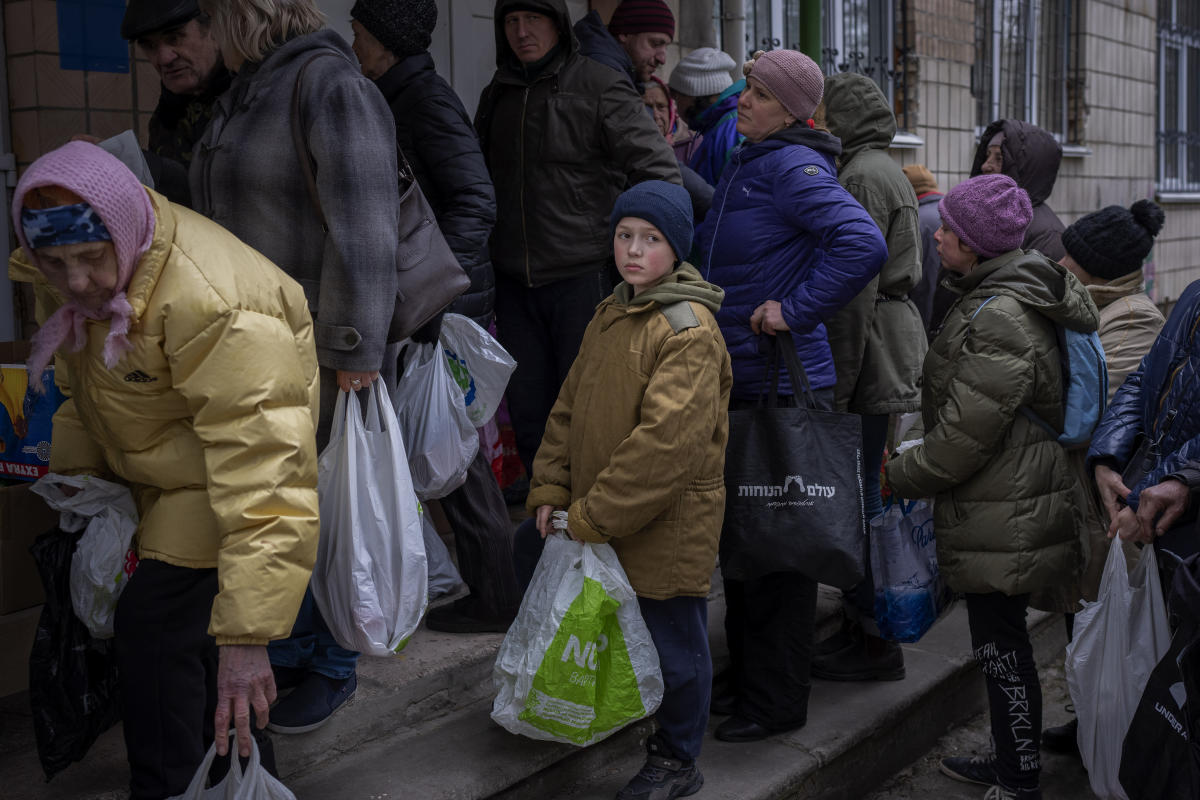
UNITED NATIONS (AP) — World hunger rose in 2021, with around 2.3 billion people facing moderate or severe difficulty obtaining enough to eat — and that was before the Ukraine war, which has sparked increases in the cost of grain, fertilizer and energy, according to a U.N. report released Wednesday.
“The State of Food Security and Nutrition in the World” paints a grim picture, based on 2021 data, saying the statistics “should dispel any lingering doubts that the world is moving backwards in its efforts to end hunger, food insecurity and malnutrition in all its forms.”
“The most recent evidence available suggests that the number of people unable to afford a healthy diet around the world rose by 112 million to almost 3.1 billion, reflecting the impacts of rising consumer food prices during the (COVID-19) pandemic,” the heads of five U.N. agencies that published the report said in the forward.
They warned that the war in Ukraine, which began on Feb. 24, “is disrupting supply chins and further affecting prices of grain, fertilizer and energy” resulting in more price increases in the first half of 2022. At the same time, they said, more frequent and extreme climate events are also disrupting supply chains, especially in low-income countries.
Ukraine and Russia together produced almost a third of the world’s wheat and barley and half of its sunflower oil, while Russia and its ally Belarus are the world’s No. 2 and 3 producers of potash, a key ingredient of fertilizer.
According to the report, hunger continued to rise in Africa, Asia, and Latin America and the Caribbean in 2021, but at a slower pace than from 2019 to 2020.
“In 2021, hunger affected 278 million people in Africa, 425 million in Asia and 56.5 million in Latin America and the Caribbean,” it said.
U.N. development goals call for ending extreme poverty and hunger by 2030, but the report says projections indicate that 8% of the world’s population — nearly 670 million people — will be facing hunger at the end of the decade. That’s the same number of people as in 2015 when the goals were adopted.
The gender gap in food insecurity, which grew during the COVID-19 pandemic, widened even further from 2020 to 2021, the report said.
Driven largely by widening differences in Latin America and the Caribbean as well as in Asia, it said that “in 2021, 31.9% of women in the world were moderately or severely food insecure compared to 27.6% of men.”
In 2020, the report said, an estimated 22% of children under the age of 5 — or 149 million — had stunted growth and development while 6.7% — or 45 million — suffered from wasting, the deadliest form of malnutrition. At the other end of the scale, it said 5.7% of youngsters under 5, or 39 million, were overweight.
“Looking forward, the gains we made in reducing the prevalence of child stunting by one-third in the previous two decades — translating into 55 million fewer children with stunting — are under threat by the triple crises of climate, conflict, and the COVID-19 pandemic,” the five U.N. agency chiefs said. “Without intensified efforts, the number of children with wasting will only increase.”
The heads of the U.N. Food and Agriculture Organization, World Food Program, U.N. Children’s Fund, World Health Organization and International Fund for Agricultural Development said the intensification of these three crises combined with growing inequalities require “bolder action” to cope with future shocks.
With forecasts for global economic growth in 2022 revised downward significantly, the five agencies expected more limited financial resources to invest in “agrifood systems” — the production, handling, transportation, processing, distribution, marketing and consumption of agricultural products.
But the agency chiefs said the almost $630 billion annually that governments spend to support food and agriculture globally can be invested “in agrifoood systems equitably and sustainably.”
Currently, they said, “a significant proportion of this support distorts market prices, is environmentally destructive, and hurts small-scale producers and indigenous peoples, while failing to deliver healthy diets to children and others who need them the most.”
The five agency heads said evidence shows that if governments redirect their resources to prioritize consumers of food and give incentives for producing and supplying nutritious foods “they will help make healthy diets less costly and more affordable for all.”
The report said a key recommendation “is that governments start rethinking how they can reallocate their existing public budgets to make them more cost-effective and efficient in reducing the cost of nutritious foods and increasing the availability and affordability of healthy diets.”




